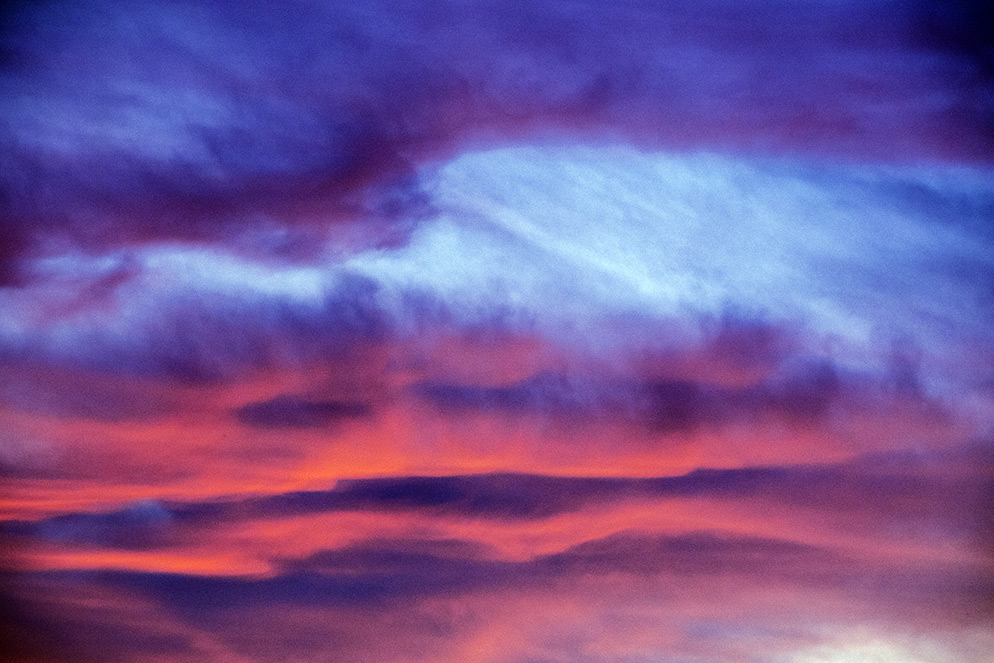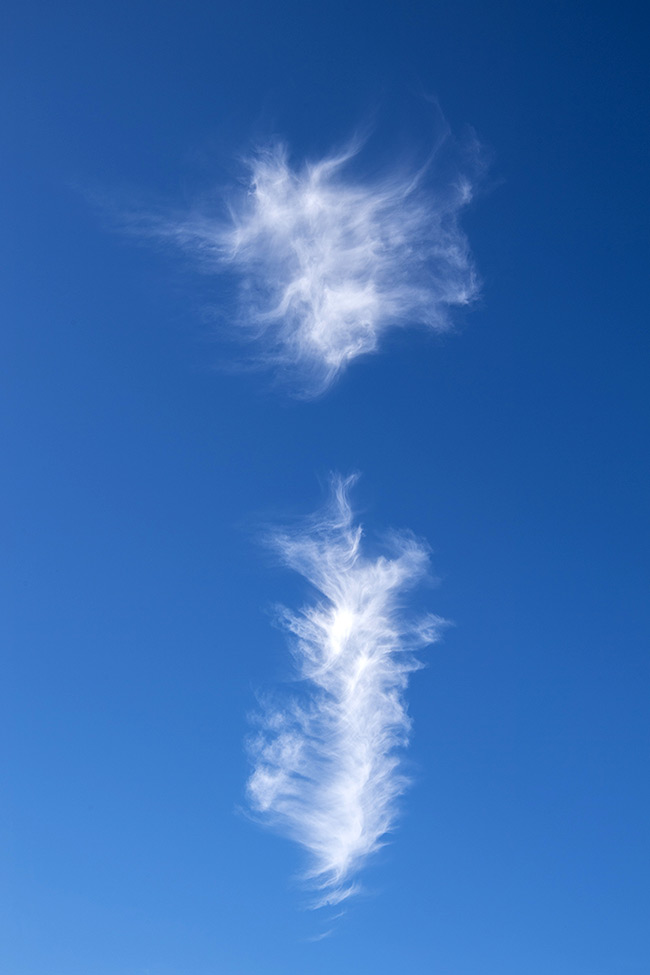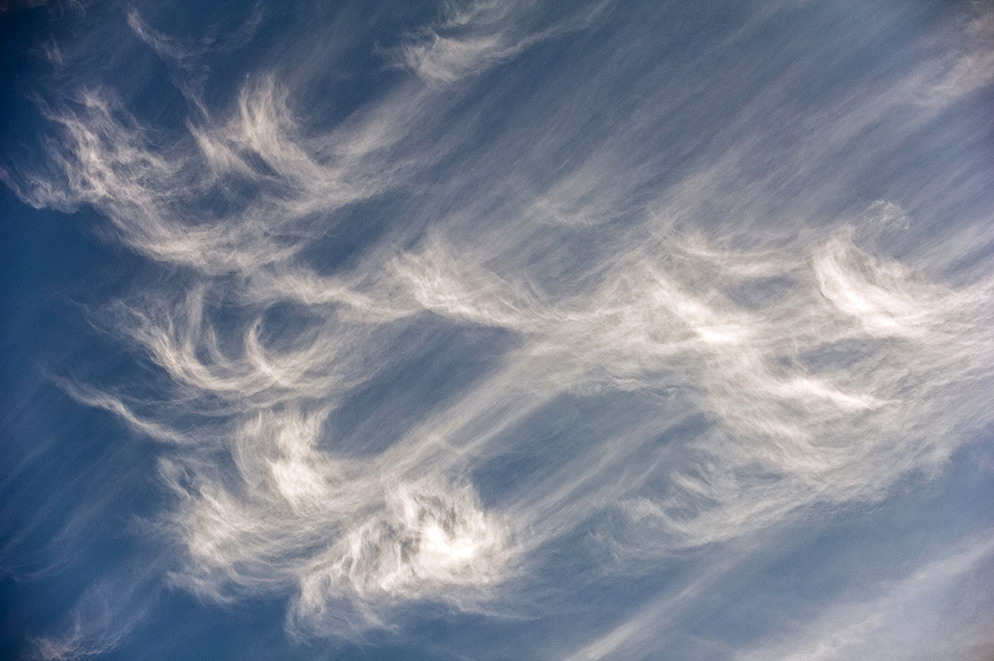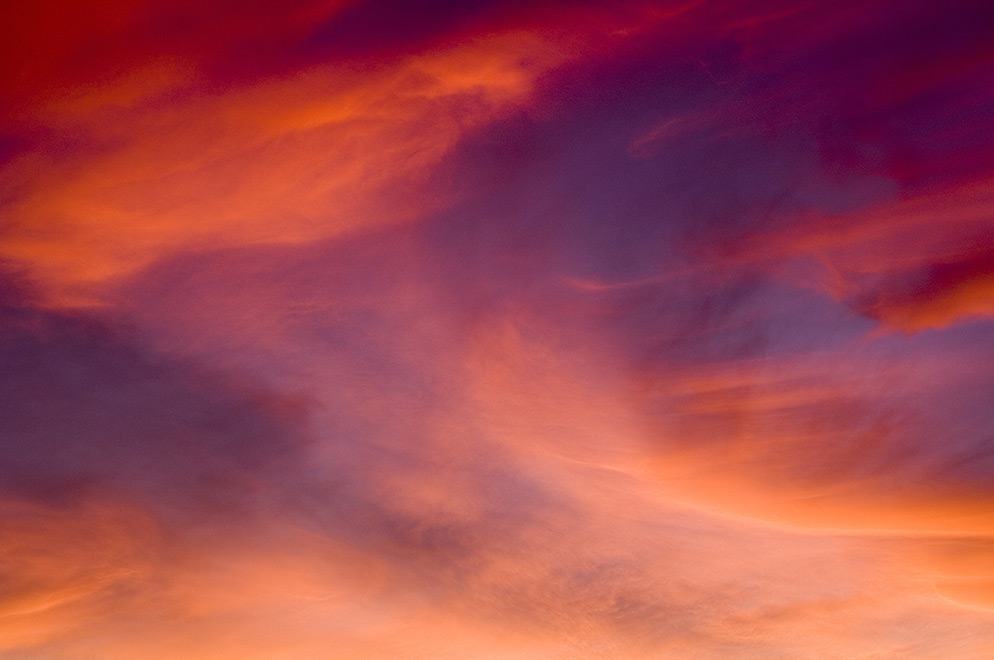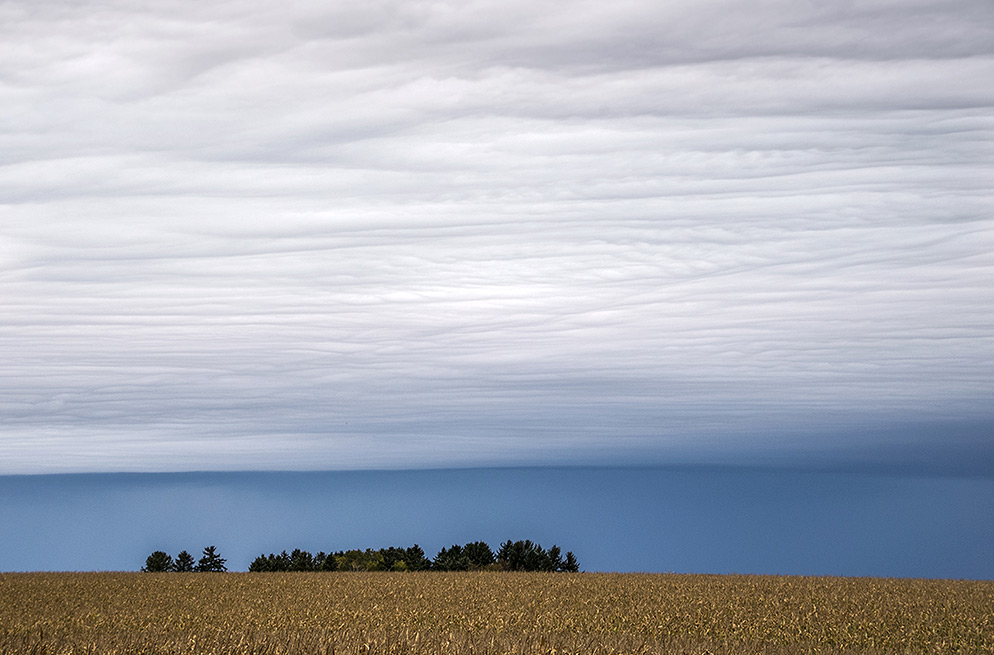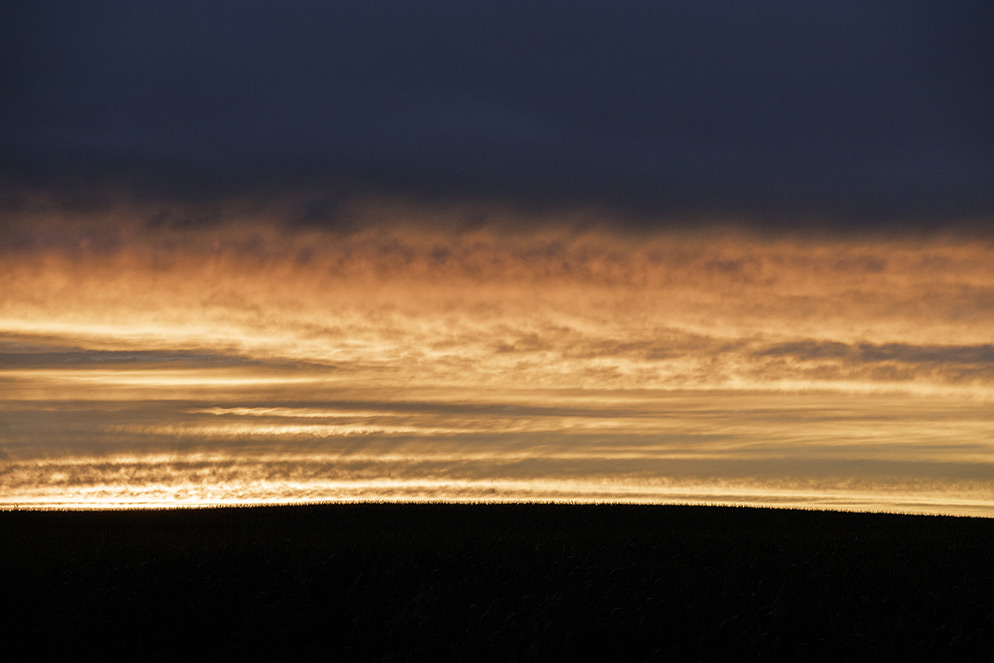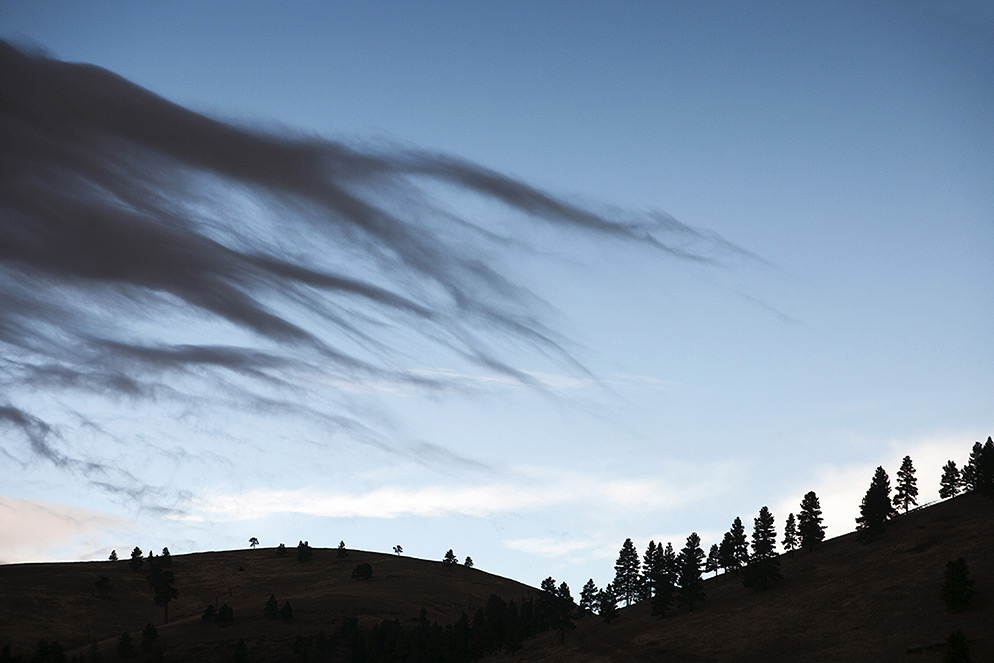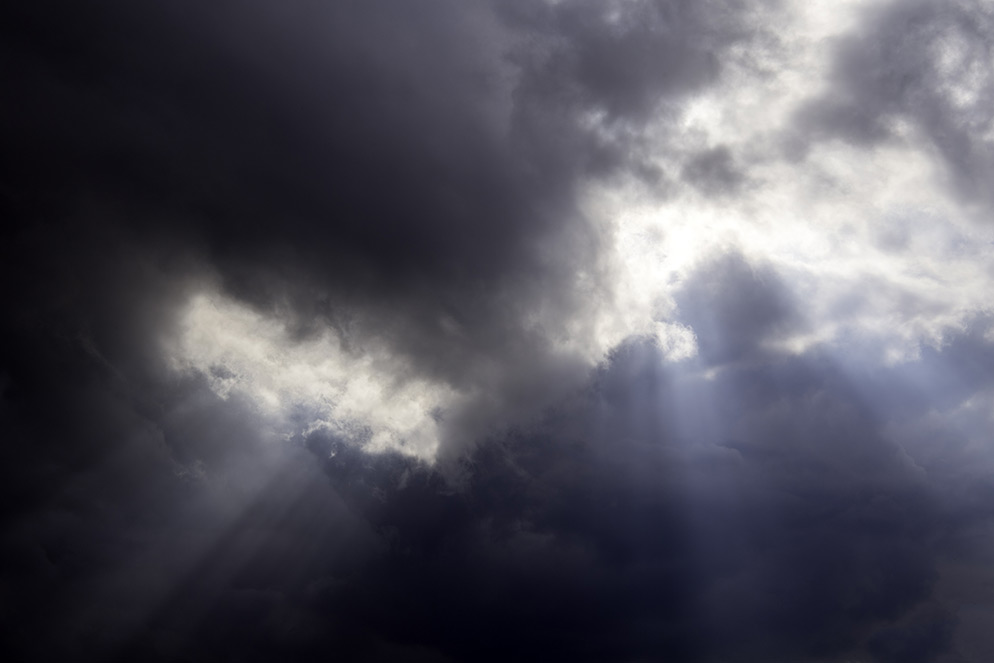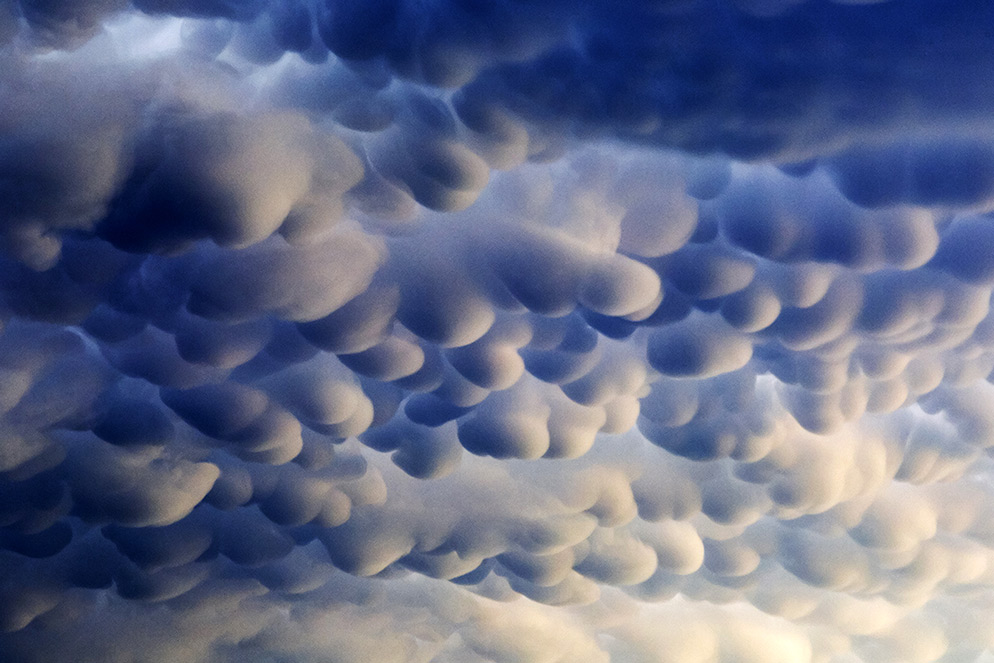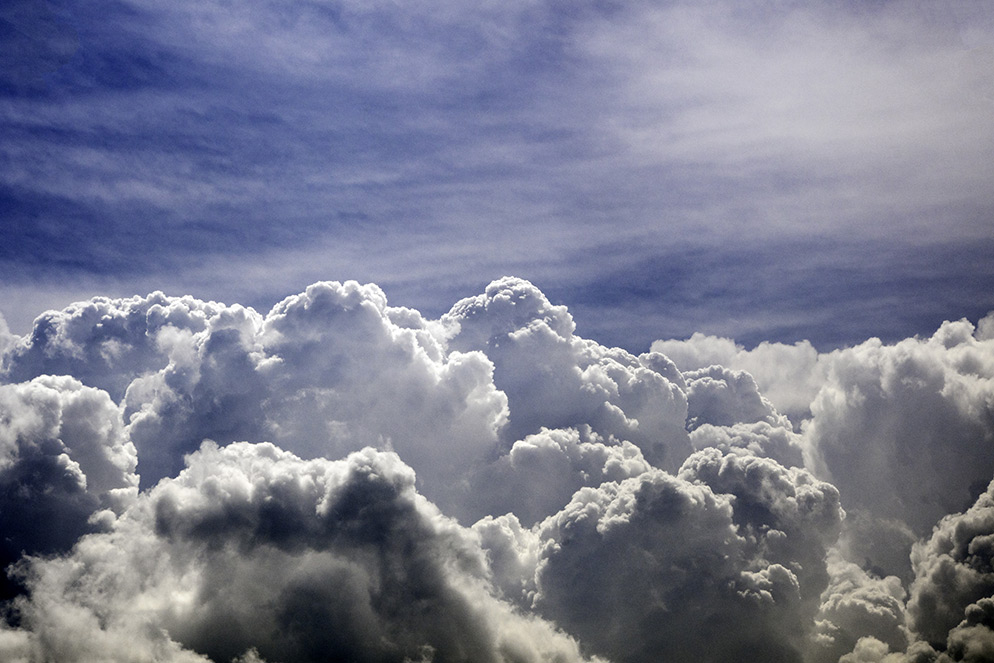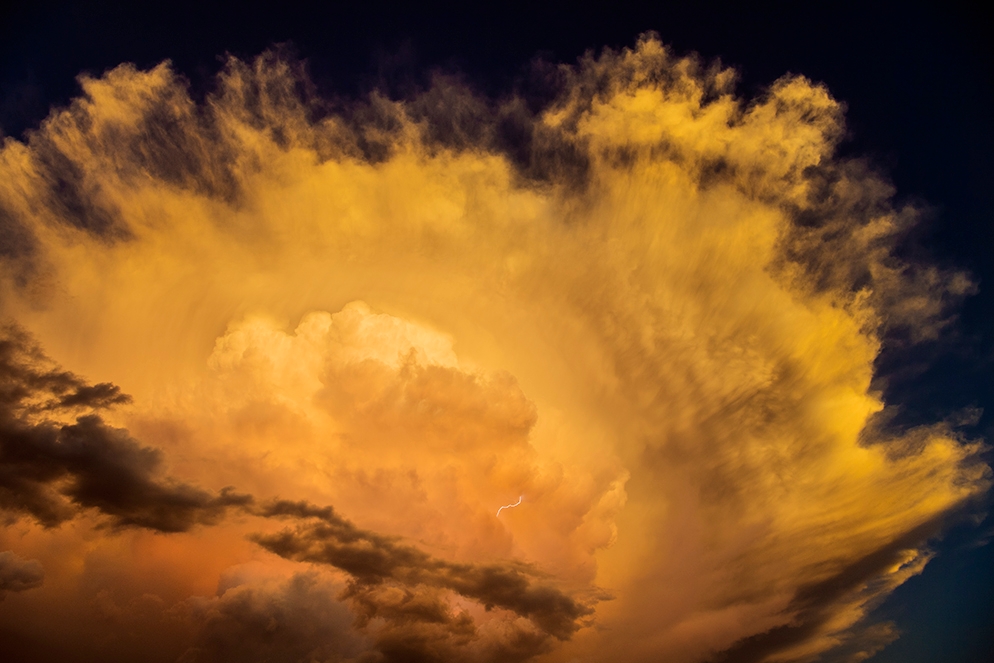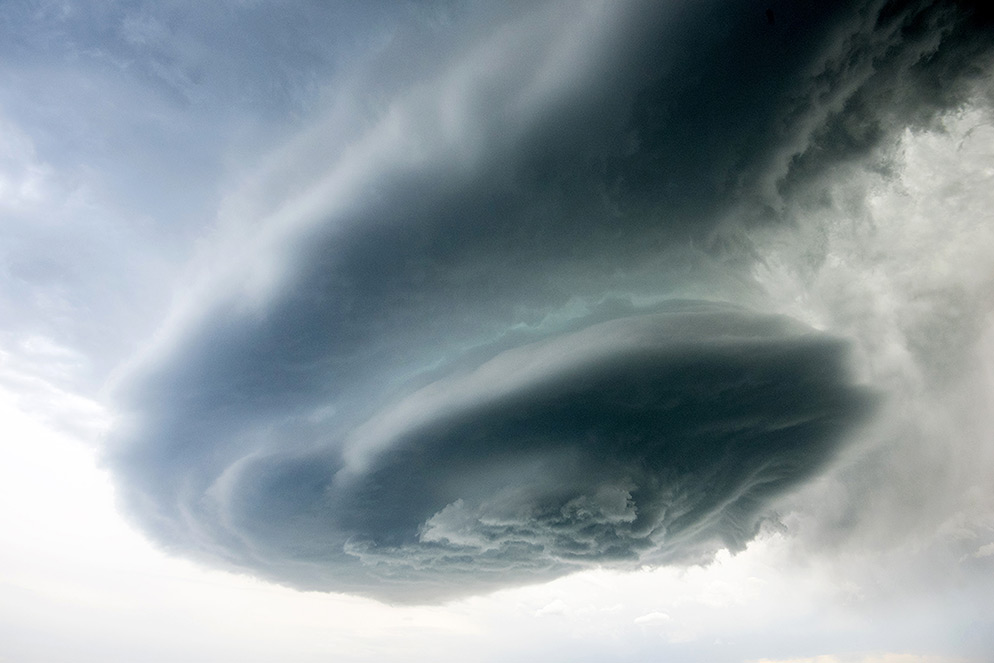The Way Up and Far Away: Shot Any Great Cloud Photos Lately?
Clouds? As photo subjects? Seriously?
Absolutely.
Okay, clouds are may not be on your list of favorite things to photograph, but even a quick look at the photos here will show how their shapes, colors and textures can make for creative, striking images.
The photos were taken by Jim Reed, whose career has been dedicated to capturing images of weather events, some of them extreme examples of the power of nature. The photos here aren't in that category, but we want to remind you of something Jim mentions whenever we talk with him for our stories: always be aware of the situation, and don't ever put yourself in danger in pursuit of a picture.
These stratocumulus clouds, shaped by the wind, caught Jim's eye as he hiked in Minnesota. "Anytime clouds are isolated like this, they get my attention; usually clouds come in groups," he says. "I first tried shooting horizontally, but I kept getting the top of a tree in the shot." D5, AF-S NIKKOR 24-70mm f/2.8G ED, 1/200 second, f/11, ISO 100, manual exposure, Matrix metering.
The Basic Decisions
The time of day is going to have a lot to do with the look of your cloud photos. There's a good chance you'll get strong colors and dramatic color effects at or near sunrise and sunset. The time of year will play an important part also.
"One of the things I really enjoy about photographing clouds is that I look at the sky and prepare to interpret it differently in September versus May," Jim says. "The more you understand what to expect—like the angle of a sunset and how long it will last—the more you can use that knowledge to get the image you really want."
Jim's next decision is a creative choice: landscape in or out? Is he going to photograph just the cloud and the sky, or is he going to be adding part or all of the landscape? The answer can depend on what the scene offers, the feeling he wants to convey and how well a composition works.
Lens Choices
That landscape-or-not decision will dictate lens choice, but before we get to specific lenses, we've got this advice: don't go out with a camera bag full of glass. One lens, maybe two, will do.
Part of the fun of cloud photography is spontaneity and the ability to shoot quickly to react to changes, and you can do quite well with one long-ranging zoom (like the AF-S DX NIKKOR 18–300mm f/3.5-5.6G ED VR; the AF-S NIKKOR 24-120mm f/4G ED VR; or the AF-S NIKKOR 28-300mm f/3.5-5.6G ED VR) that'll take care of both landscape-in and landscape-out photos. Or you can choose a wide-angle zoom (like the AF-S NIKKOR 16-35mm f/4G ED VR or the AF-S NIKKOR 24-70mm f/2.8G ED) and a medium range tele-zoom (like the AF-S NIKKOR 70-200mm f/2.8G ED VR II or the AF-S VR Zoom-NIKKOR 70-300mm f/4.5-5.6G IF-ED).
Tips, Techniques, Gear
Will you need a tripod? Not so much. Jim uses one from time to time, but, he says, "VR [Vibration Reduction] lenses are so reliable that many times there's no need for additional support." If you use a tripod and want to shoot at an extreme angle or straight up into the sky, it's best to have a tilt- or ball-head on the 'pod.
Filters? Jim generally keeps a UV filter on his lens to protect it, and he'll use a graduated ND (neutral density) filter for photos in which both sky and land are featured "and you've got a really bright landscape or really bright sky and need to even out the range in the image."
As far as exposure, he'll let Matrix metering handle it, but he does have this bit of advice: "One thing I've learned shooting clouds with digital cameras is that it's better to underexpose than overexpose. With today's image-editing software you can usually pull detail from an underexposed image, but if it's not there—if you've overexposed and burned it out—that's going to be a problem."
He also suggests manually focusing on the cloud and selecting an f/stop that provides some depth-of-field insurance. "And I always check the image in the LCD after the shot."
The two defining criteria for clouds are shape and height in the sky. "Some days clouds seem to hover over the ground; on other days they're way up there—30,000 to 40,000 feet," he says. "Clouds at lower levels are made of water droplets; the ones way up are made of ice crystals. And right there you can start to think about the time the sun is going to go down and whether the setting sun's rays are going to hit the ice crystals of high clouds and create an iridescent effect. The thing is, the more you know about your subject, the more fun you'll have and the better your pictures will be."
Need to Know
Which brings up an obvious question: is it important to know what kinds of clouds you're seeing and photographing?
Up to a point, yes. Knowing can keep you out of danger and help you predict the kind of weather that's on the way. And if you get serious about the subject, cloud knowledge can serve to introduce you to folks with a like-minded interest.
"I've looked at the sky, clouds and weather activity as almost a language," Jim says. "If you're a farmer, a surfer, a schoolteacher, a photographer—if you understand clouds, you can look at the sky and get an idea of what to expect, weather wise, that hour, later in the day, sometimes the next day."
Learning about clouds is simply a matter of accessing the internet. As a start, Jim suggests the Cloud Appreciation Society. "They have the best cloud-identifying app I've seen yet," he says. In addition, the World Meteorological Organization "is a prime source of information on cloud types, variations and combinations," and checking with a smartphone app like RadarScope will offer, among other features, a look at satellite views of clouds that will provide cues to their travel across the skies.
Other than keeping in mind the safety factor in the event of changing or threatening weather, there's no right or wrong way to go about cloud photography. "It's just a matter of what you get out of it," Jim says. "There's an exciting sense of freedom to it—as a solo activity, you dictate where you go, the time of day and how you react to what you see. There's no shortage of subject matter and there's always the element of surprise. And I think any subject that inspires people to increase their appreciation or knowledge of nature is useful."

